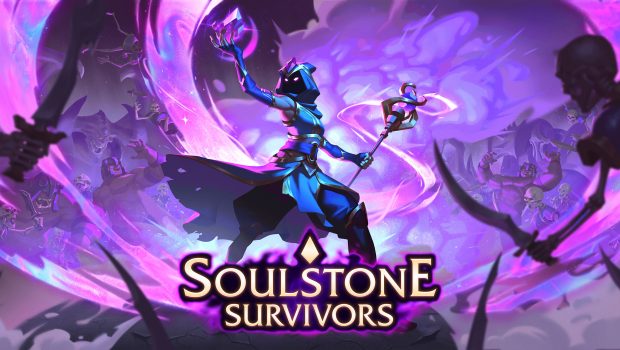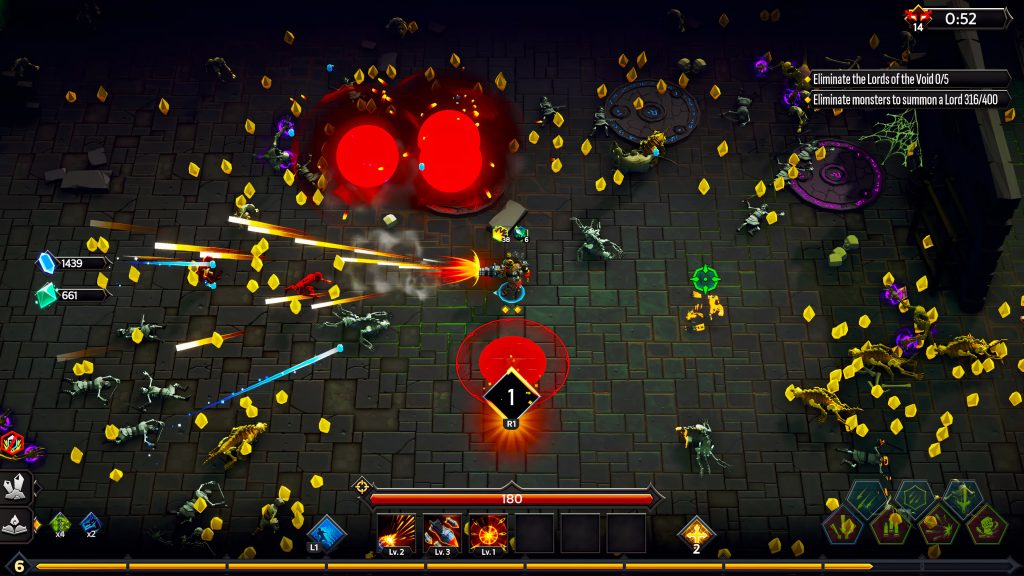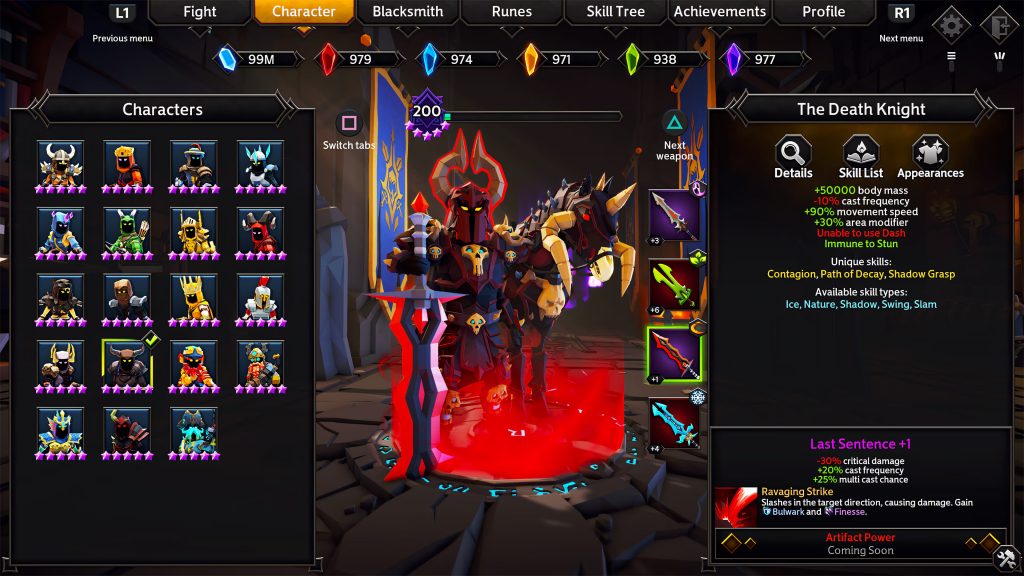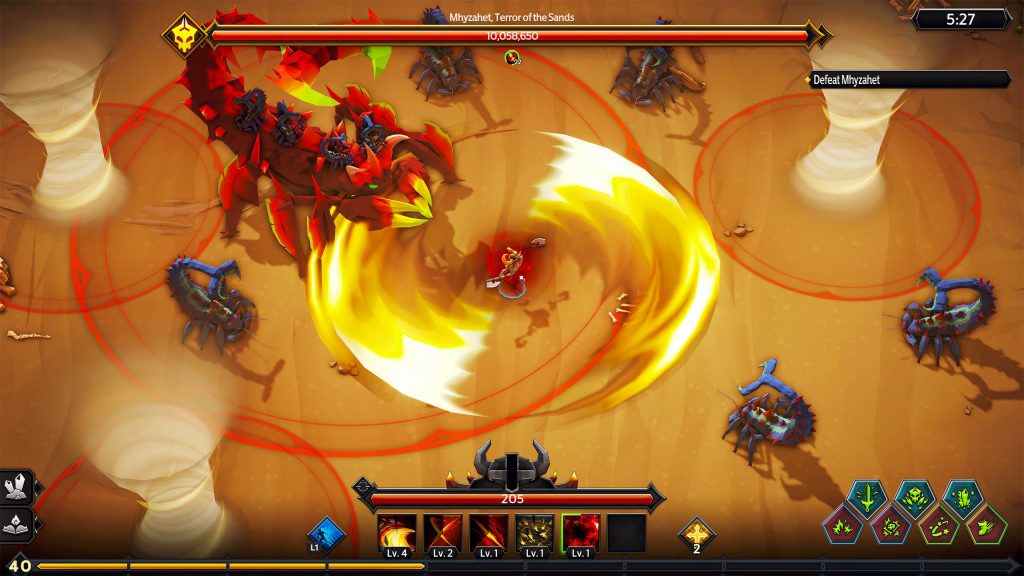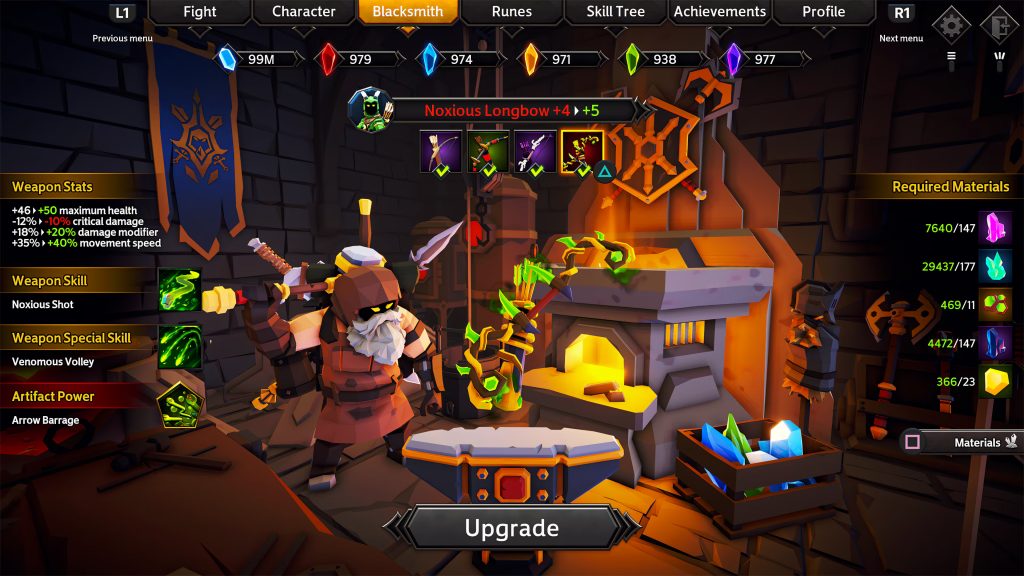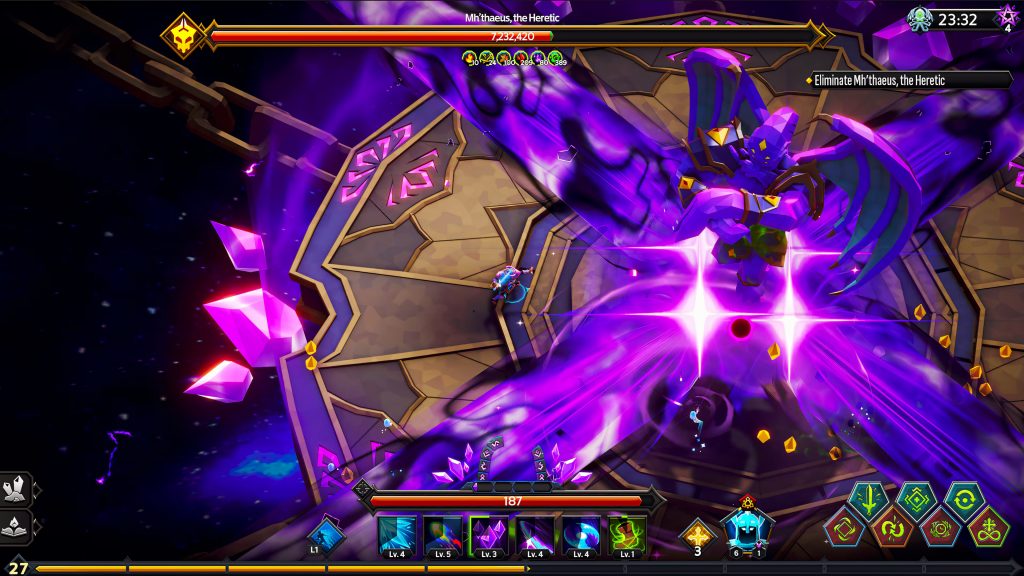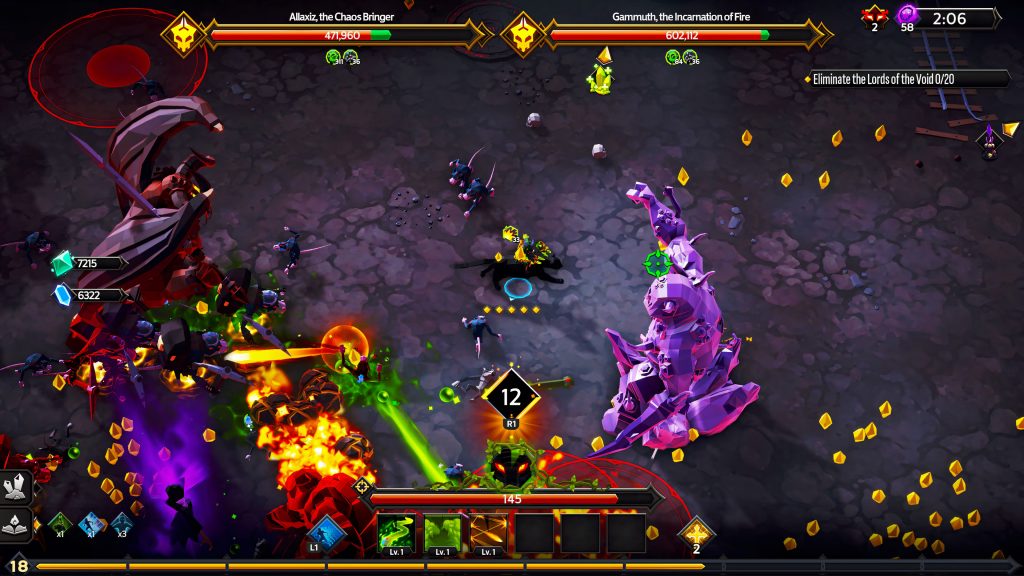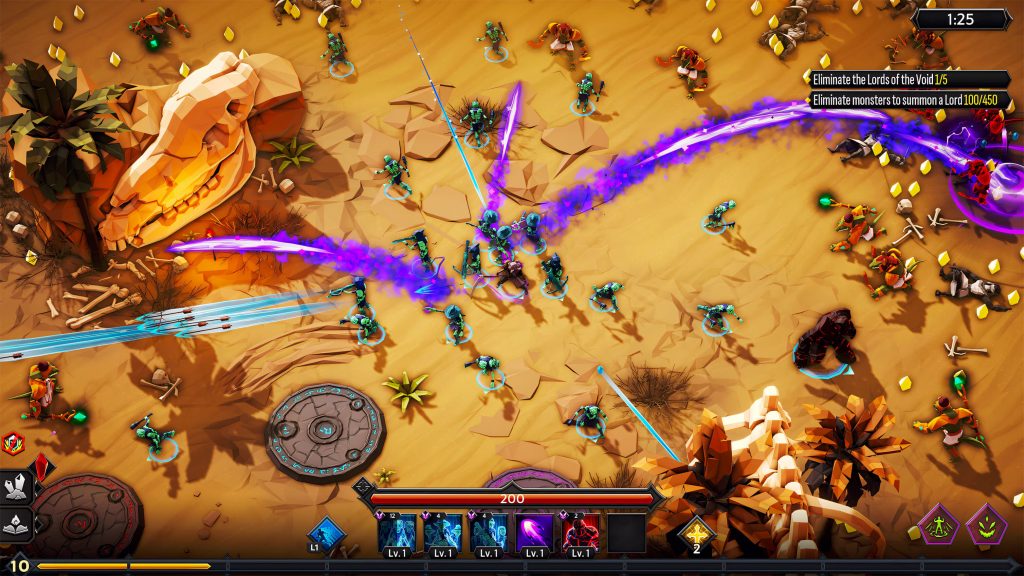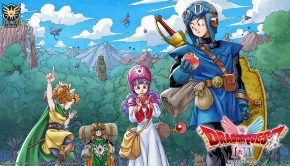Soulstone Survivors Review (PS5)
Summary: Soulstone Survivors is a razor-sharp, endlessly replayable power fantasy wrapped in smart systems, slick controls, and relentless style. With its deep build customization, satisfying progression, and chaotic yet strategic gameplay, it doesn’t just survive the arena roguelite genre, it masters it.
4.5
Savage Synergy
Arena roguelites have exploded in popularity in recent years, but few of them feel as tightly constructed or as genuinely rewarding as Soulstone Survivors. Originally released in 2022 and arriving on PlayStation 5 and Xbox Series X/S on June 17th of 2025, Soulstone Survivors doesn’t just follow in the footsteps of games like Vampire Survivors, it builds on the genre with a surprising amount of depth, customization, and mechanical polish. What starts off looking like another flashy horde shooter quickly reveals itself to be a layered, addictive system of synergies, strategy, and satisfying chaos.
You begin each run by selecting a character, one of over 20 unique Void Hunters, each with their own passive traits, starting weapons, and base stats. From there, you’re dropped into a sprawling map, surrounded by a steady stream of enemies. The goal is simple: survive the waves, level up, and defeat five increasingly powerful bosses known as the Lords of the Void. Defeating all five opens a trio of portals that lets you either end your run, push forward into Endless Mode, or take on Overlord Mode, where the challenge continually escalates. It’s a formula that encourages experimentation, especially once you’ve unlocked new characters and game modes.
The core combat system hinges on auto-attacks, but don’t mistake this for a passive game. Movement is crisp, and your dodge mechanic is essential for avoiding danger, especially when the screen is packed with enemy projectiles, traps, and area-of-effect attacks. There’s a real sense of rhythm to the gameplay, dodging at just the right time, positioning yourself between mobs, and letting your build take over as you scale into near-invincibility. You’re never just watching the numbers go up; you’re navigating the danger with precise movement, adjusting on the fly, and trying to maintain control of the battlefield.
One of the most satisfying parts of the game is the way abilities and passive skills interact. During a run, you level up and choose between a variety of active abilities, anything from ground-splitting earthquakes to spinning fire wheels or electric arcs that chain through enemies. These can be further enhanced by passives that increase specific elemental damage types, cooldown reductions, or critical hit chances. The system encourages you to specialize. For example, if you’ve picked up several Earth-based abilities, like orbiting rocks, seismic slams, or protective walls, you can double down with Earth-specific passives that enhance all of those skills at once. This allows for exponential scaling and the deeply satisfying sensation of becoming an unstoppable force of nature. You can do this with any type of build. Lightning builds are fast, chaotic, and wide-ranging and offer their own thrills. Watching an electric current rip through dozens of enemies while stacking passives that boost shock damage or cast frequency creates a feedback loop of destruction that feels both strategic and wild. The game rewards thoughtful builds, but it also knows when to let you break the rules and just revel in the power fantasy.
That power is backed by long-term progression. After each run, you earn multiple forms of currency: basic resources, soulstones, and rarer upgrade materials. These can be used to unlock new Void Hunters, craft alternate weapons, and invest in a sprawling skill tree that improves global stats like damage, movement speed, cooldown recovery, and health. It’s a classic roguelite structure that gives each run a sense of purpose, even when you fail, you’re always inching forward.
Further customization comes in the form of runes, which can be equipped to characters before a run to provide passive bonuses. These offer small but meaningful tweaks to how you play, whether by increasing area-of-effect range, granting bonus experience, or giving a slight edge in survivability. Combining the right runes with the right character and weapon setup adds another layer of strategy before you even set foot on the battlefield.
The game offers a few distinct ways to play. The main mode, Void Fields, is where most players will spend their time. It’s a straightforward loop of fighting through increasingly difficult waves to summon the Lords of the Void and claim your victory. There’s also the Unholy Cathedral, a more intense gauntlet-style challenge that tests your builds under more punishing conditions. Titan Hunt mode takes a different approach, focusing on tracking down and destroying the game’s biggest enemies across a more open structure. These modes don’t reinvent the formula, but they help to stretch the gameplay in interesting directions and offer useful rewards for unlocking more content.
One of the more clever systems in Soulstone Survivors is the use of curses. Before each run, you can choose to enable curses that make things harder like reducing healing item drops or spawning elite enemies more frequently. Playing under these conditions dramatically increases the number of rewards you receive, and clearing content with high curse levels is required to unlock some of the game’s more advanced features. It’s a smart way to scale difficulty while maintaining a sense of agency and long-term reward.
Visually, the game is a treat. It leans into a stylized aesthetic that favors clarity over complexity, with bright, readable animations and bold, colorful effects. Every attack, explosion, and status effect feels like it has weight and intent, even when the screen becomes a whirlwind of chaos. The enemy designs are sharp, ranging from skeletal warriors and towering golems to slithering snakes and monstrous beasts. Despite the scale of the action, performance is solid, and the visual noise never overwhelms your ability to read the battlefield. The music deserves special mention. It’s not loud or in-your-face, but instead builds a pulsing, almost hypnotic atmosphere that helps guide your internal tempo as you dodge, strike, and repeat. It’s subtle but incredibly effective, an unsung hero that ties the experience together and keeps your brain locked into the flow of combat.
If there’s a criticism to be made, it’s that the map design could use a bit more variety. While the arenas are different enough in color palette and theme, they generally follow the same open, rectangular layout. This isn’t a major issue given the focus of the gameplay, but it can lead to some visual fatigue during longer play sessions. More diverse environments with unique layouts or hazards could go a long way in adding texture to the already-solid loop.
The game’s greatest strength, its endless replayability, can also be its greatest challenge. Because it’s built around repetition and progression, there’s always the risk of hitting a plateau where the content begins to feel too familiar. That’s not a dealbreaker, but it does raise the hope for future updates that introduce new modes, maps, or systems to shake things up from time to time. Still, given the sheer amount of content already in the game, from the dozens of unlockable characters to the endlessly customizable builds, Soulstone Survivors has more than enough to keep most players hooked for a very long time.
Final Thoughts?
Soulstone Survivors is one of the most satisfying and mechanically deep arena roguelites available today. It refines every part of the formula with precision, layering its chaos with just the right amount of control and customization. Whether you’re new to the genre or a veteran looking for your next obsession, this is a game that understands exactly what makes power progression addictive and delivers it in near-perfect form.


